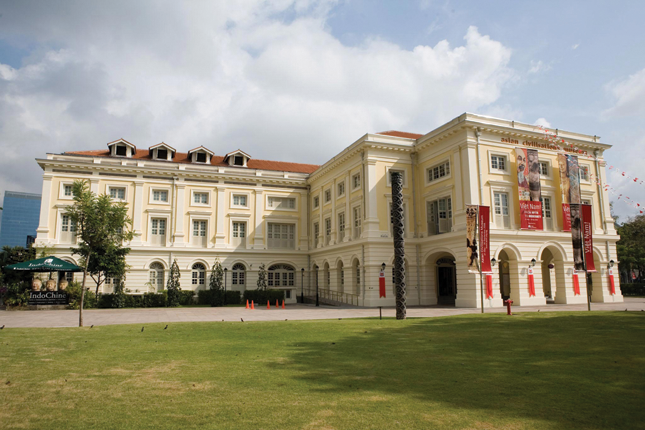Situated at the mouth of the Singapore River, the Former Empress Place Building was an important government building in Singapore up to the 1980s. Constructed by Indian convicts, the building once housed key administrative departments.
Civic District of Singapore
In 1832, Singapore replaced Penang as the administrative seat of the Straits Settlements, which comprised Penang, Malacca, and Singapore. The Straits Settlements became a Crown Colony in 1867, when its governance was transferred from the British Raj to the Colonial Office in London. Civic monuments built during this period highlighted Singapore’s evolution from a trading port to a fully-fledged British colonial city. Among this new generation of colonial buildings were the Former Attorney-General’s Chambers, Istana, National Museum of Singapore, Victoria Theatre and Victoria Concert Hall, and the Former Empress Place Building.
Government Offices
It was designed by Colonial Engineer Major John F. A. McNair, who was also Superintendent of Convicts. Convict labour was employed for the construction of the building, which commenced only in June 1864 even though the project was approved almost a decade earlier in 1855. It was delayed because the Straits Settlements’ resources were diverted to military spending.
As soon as the building was completed in December 1867, government departments from Maxwell’s House moved in and occupied the building. In fact, almost the entire bureaucracy was housed there: the Secretariat, Public Works and Medical Departments, Treasury and Stamp Office, Offices of the Colonial Engineer, Official Assignee, and Inspector General of Police. As a result, the building came to be known simply as Government Offices. Its more familiar moniker, Empress Place Building, was adopted only later, after the adjacent pedestrian space was named Empress Place in 1907 in memory of the late Queen Victoria.
Administrative Offices
Even after Singapore gained its independence in 1965, the Empress Place Building continued to function as a government building. The Citizenship Registry, Immigration Department, and Registry of Births and Deaths were once located there. In the 1980s, the bureaucratic and governmental departments vacated the premises. The century-old edifice was later restored and converted into a historical and cultural exhibition centre. On 7 April 1989, the renovated building was reopened as a museum.
Architecture
The Former Empress Place Building incorporated several Neoclassical features into its fine architecture. It has a rusticated ground floor and arcaded verandahs, as well as Roman Doric façade for the principal storey. The high-ceilinged rooms – including a spacious room on the upper floor that once served as the Legislative Chamber – are lined with stately Doric columns. Many of the original decorative features, such as plaster mouldings, architraves, and cornices, still survive. The numerous French windows around the building kept the interior cool and well ventilated in Singapore’s tropical climate before air-conditioners were installed.
Former Empress Place Building Today
Over the years, the building underwent several phases of expansion to cater to needs of the various occupants. Since 2003, the Former Empress Place Building has been home to the Asian Civilisations Museum, which showcases the material cultures of China, Southeast Asia, South Asia, and West Asia.
Our National Monuments
Our National Monuments are an integral part of Singapore’s built heritage, which the National Heritage Board (NHB) preserves and promotes for posterity. They are monuments and sites that are accorded the highest level of protection in Singapore.




